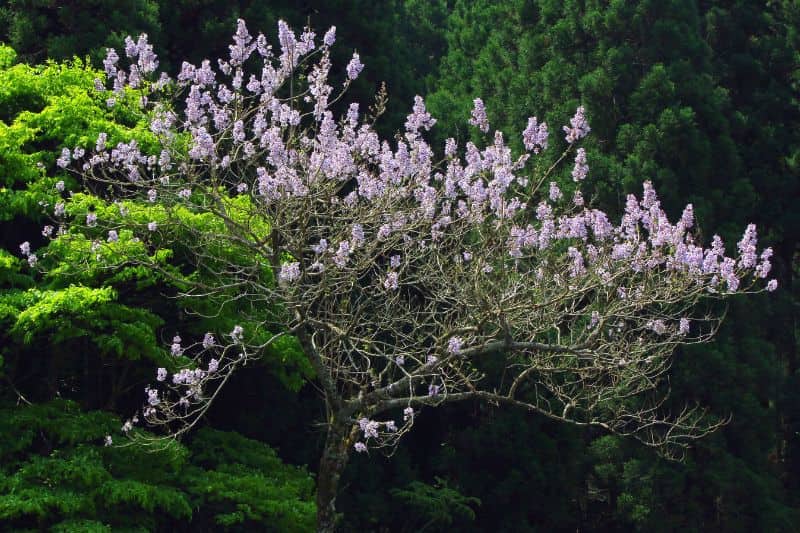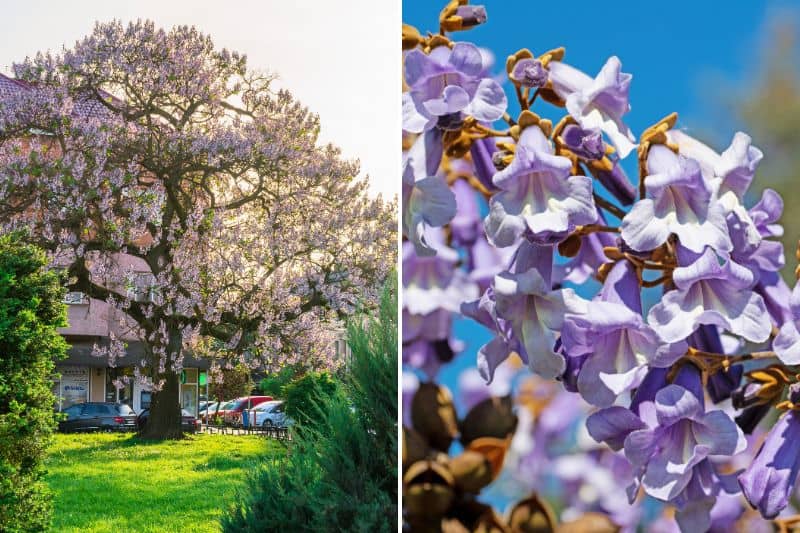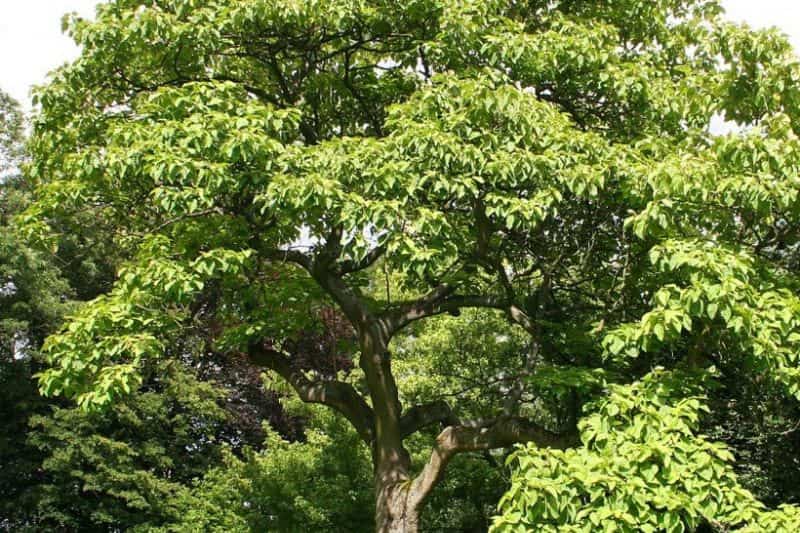In a world where climate change is an unavoidable reality, the search for sustainable solutions is more crucial than ever. Every action counts, including in our gardens. Among the many ways to attenuate the effects of climate change, tree planting plays a key role. Among them, a champion from Asia stands out: Paulownia, a tree with exceptional carbon capture properties.

What is Paulownia?
Paulownia is a deciduous tree distinguished by its large heart-shaped leaves and clusters of purple flowers. It can reach an impressive height of 10 to 25 metres in its natural habitat, making it a majestic addition to any landscape or large garden. Here in France, it will typically reach between 8 to 12 metres tall depending on the growing conditions.
It is native to Asia, particularly China and Japan, where it is known as "the emperor tree". Paulownia has been introduced to other parts of the world, including Europe and North America, where it has adapted well to various climatic conditions.
This tree is traditionally used for its wood, which is both lightweight and strong. Additionally, its ability to grow quickly makes it a popular choice for reforestation and ecological gardening projects. It is also used in traditional Asian medicine.
Note: the genus Paulownia includes six different species. However, the two most commonly cultivated species are Paulownia tomentosa and Paulownia fortunei.

The carbon capture properties of Paulownia
Paulownia is often referred to as the "carbon capture champion", and for good reason. According to scientific studies, this tree can sequester an impressive amount of carbon dioxide (CO2) from the atmosphere. In fact, an adult Paulownia can absorb up to 48 kilograms of CO2 per year, which is about 10 times more than most other trees commonly used in reforestation projects.
This exceptional capability is partly due to its rapid growth. Paulownia can reach maturity in 10 years, meaning it starts to have a positive impact on the environment much more quickly than other trees.
When compared to other trees like oak or pine, which are typically used in reforestation projects, Paulownia stands out significantly. For example, an oak can take up to 30 years to reach maturity and captures on average only 4 to 5 kilograms of CO2 per year. Pine, although faster growing than oak, captures on average 10 to 20 kg of CO2 per year, but it still does not reach the levels of Paulownia.
Finally, Paulownia is also noted for its ability to regenerate from its stump after cutting, an asset that can promote rapid new growth and continuous carbon capture. However, this capability varies greatly depending on soil conditions, climate, and forestry management practices.

Additional benefits of Paulownia
In winter, its large, nutrient-rich leaves decompose quickly and enrich the soil. This is an additional asset for mulching, composting, and permaculture.
Resilient, Paulownia is a robust tree that easily adapts to a wide range of climatic conditions and soil types. It is also resistant to diseases and pests, making it a sustainable choice for any garden or reforestation project.
Further reading
To learn more about this tree, read our sheet on Paulownia, Imperial Tree: planting, growing, and care.
































Comments